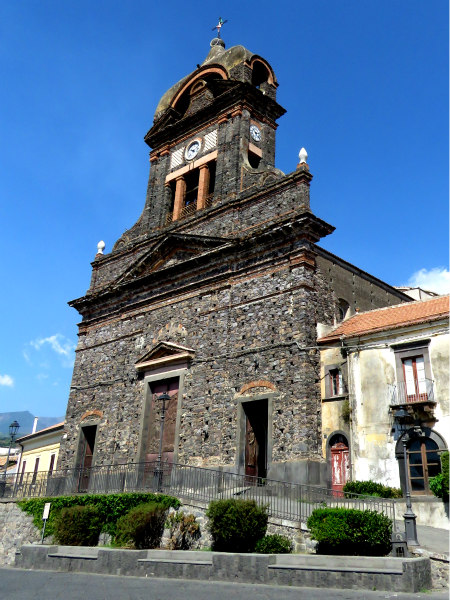If above 1000 meters above sea level, Etna assumes the appearance of a real volcano, with entire regions of wild and harsh nature, extinct or active craters and lava caves, everything changes as you descend. The work of man here leaves more and more traces. Therefore, an itinerary around the volcano, below 1000 meters, will almost entirely include towns, villages, cultivated fields and farms. This shows how the material expelled from Etna becomes daily life for the population. There are many piedmont locations that deserve to be admired. Here we suggest some truly unmissable stops.
The vineyards of Etna North
Traveling along the north-eastern side of Mount Etna, you are immersed in a landscape made up of vineyards as far as the eye can see. Between Sant’Alfio, San Giovanni Montebello, Piedimonte, Linguaglossa, Solicchiata and Randazzo, the volcano’s lava soil gives the best of its production. The vineyards of Etna, and in particular of Etna North, are a paradise of delicacies. The “red wine of Etna”, the “white wine of Etna” and various high quality liqueurs. Vines such as Nerello Mascalese, Nerello Cappuccio, Mantellato, Minnella and Carricante are indigenous . They provide world famous wine labels. Almost everywhere you can stop for a tasting or to buy bottles. Try them especially in the area of Solicchiata and Passopisciaro, near Linguaglossa.
 st alfio’s church
st alfio’s church
The “houses of lava”
From the marvelous church of Sant’Alfio – in lava stone and red bricks – to the spectacular bell towers of Pedara, the entire foothill strip from east to south is characterized by lava stone constructions. The basalt rock of Etna lends itself to a thousand uses, especially in construction. In the past, there have been many houses and churches built with this material. Definitely worth admiring: the Art-Nuveau buildings of Zafferana Etnea, the Norman castle of Aci Castello – on the coast, the churches of Belpasso (Maria Santissima Immacolata).
But also the churches of Trecastagni (San Nicola, Santi Martiri Alfio, Cirino and Filadelfo), of Pedara (Santa Caterina), of Nicolosi (Mother Church, Church of San Giuseppe). Between Viagrande and Aci Bonaccorsi, there are dozens of noble palaces, villas and simple rural houses built in lava stone. They are often bordered by the famous dry stone walls. Wonderful lava buildings are also found on other sides of the mountain, such as in Paternò, Adrano, Randazzo.
Palaces and castles between Paternò and Randazzo
Walking along the Etna belt that runs from south to west, you move between ancient medieval fiefdoms. Paternò and Adrano, for example. They show off all the beauty of the volcano in their crenellated towers and in the supporting structures of the churches. Also the bell towers and the princely palaces of Bronte are charming. So are the baroque buildings of Biancavilla. Deviating towards the coast, to Catania, the Ursino Castle and the grandiose Benedictine Monastery are majestic examples of “lava castles” too. At the end of the “tour from the west” you return to the north. In Randazzo do admire the Archi street, the church of Santa Maria and those of San Martino and San Nicola. Beautiful to see also the Town Hall and the mullioned windows of Palazzo Clarentano.
The “pyramids”
For many years they have been discussing the anomalous constructions that can be glimpsed, here and there, in the Etnean countryside. The so-called “pyramids”. The shape is very similar to the Mexican square pyramids, but they are neither historical nor mysterious. They are just artificial hills created by farmers in the 19th century after having cleared the fields. By reusing the stones removed from the ground, they created these large buildings. The “pyramids” are mostly warehouse, storages or just terracings.
Historic trees
Below 1000 meters asl, you can still admire some unique natural beauties on Etna. All the
 che century old chestnut
che century old chestnut
historic trees of this mountain are found below this altitude. The giant broom of Milo, for example, a particularly tall and developed specimen of this plant. Similar but smaller ones grow to form real groves also in the Piano dei Grilli area, in Bronte.
Also near Milo, on the east side, is the grandiose Ilice (holm oak) Carrinu. And not far away, on the road that connects Milo to Sant’Alfio, you admire the centuries-old Chestnut Tree of the Hundred Horses. This last tree is so large that it provided shelter – according to a medieval local tale – to a queen and her entire army! (all photos by G. Musumeci)